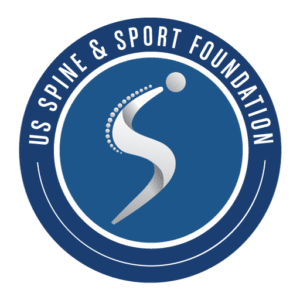A team from The Vert Mooney Research Foundation (DBA US Spine & Sport Foundation) recently published a manuscript in the Cureus Journal of Medical Science:
Mayer JM, Verna JL, Hubka M, Phelps B, Wolfinger C, Lane CL. Comparison of disability, physical performance, and other biopsychosocial factors in full duty career firefighters working with and without current low back pain. Cureus Journal of Medical Science. 2024;6(6):e62189. doi:10.7759/cureus.62189
The manuscript reports on findings from the grant: Implementation of a Regional Firefighter Wellness Initiative, U.S. Department of Homeland Security, grant # EMW-2013-FP-00723.
The full text manuscript is open access and found here:
https://www.cureus.com/articles/261601-comparison-between-disability-physical-performance-and-other-biopsychosocial-factors-in-full-duty-career-firefighters-working-with-and-without-current-low-back-pain#!/
Abstract
Introduction: Low back pain (LBP) is highly prevalent and a top cause of disability-related early retirement in firefighters. Those with a lifetime history of LBP have various deficiencies that are associated with increased injury risk and absenteeism. However, the influence of working with current LBP on disability, physical performance, and other biopsychosocial factors has not been fully characterized in this population. The purpose of this study was to compare anthropometric measures, exercise habits, physical fitness / performance, disability / work ability, and other biopsychosocial factors of firefighters working with and without current LBP.
Methods: A cross-sectional study was conducted using baseline assessments from 419 full duty career firefighters without documented work restrictions (age 37.6 ± 8.8 y, 5 F, 414 M) who were enrolled in a regional wellness initiative in Southern California, USA. Current LBP status was determined by a questionnaire and confirmed by an interview. Anthropometric measures, patient-reported outcomes, and physical fitness tests were used to assess body mass index; body fat %; waist circumference; strengthening, cardiovascular, and flexibility exercises frequency; back and core muscular endurance; functional movement quality, perceived back-related disability, lift and carry ability, and firefighter task ability; sleep quality; and perceptions of fear and fatigue and catastrophic injustice experience. Scores for participants with and without current LBP were compared using analysis of variance and chi-square analysis.
Results: The point prevalence of current LBP was 19.81% (83/419). For the entire cohort, those with current LBP had significantly worse scores than those without current LBP for all assessed variables, except core muscular endurance and functional movement quality. These trends held up when analyses were stratified by age and obesity categories, and approximately half of the comparisons retained statistical significance. A significantly greater percentage of participants with current LBP were working with some level of back-related disability and/or perceived physical demand characteristics of work level below the required very heavy job demands.
Conclusion: Nearly one-fifth of full duty career firefighters without documented work restrictions reported having current LBP, and these individuals had deficits in several modifiable biopsychosocial factors across five health domains. These findings can help guide future research and implementation efforts in the fire service designed to improve performance, resiliency, work readiness, recovery, and quality of life, as well as reduce impairment, disability, absenteeism, and presenteeism.
Key Words: firefighters, low back pain, injuries, work readiness, biopsychosocial model, wellness, fitness
